 Technology
Technology  Technology
Technology  Humans
Humans 10 Everyday Human Behaviors That Are Actually Survival Instincts
 Animals
Animals 10 Animals That Humiliated and Harmed Historical Leaders
 History
History 10 Most Influential Protests in Modern History
 Creepy
Creepy 10 More Representations of Death from Myth, Legend, and Folktale
 Technology
Technology 10 Scientific Breakthroughs of 2025 That’ll Change Everything
 Our World
Our World 10 Ways Icelandic Culture Makes Other Countries Look Boring
 Misconceptions
Misconceptions 10 Common Misconceptions About the Victorian Era
 Mysteries
Mysteries 10 Strange Unexplained Mysteries of 2025
 Miscellaneous
Miscellaneous 10 of History’s Most Bell-Ringing Finishing Moves
 Technology
Technology Top 10 Everyday Tech Buzzwords That Hide a Darker Past
 Humans
Humans 10 Everyday Human Behaviors That Are Actually Survival Instincts
 Animals
Animals 10 Animals That Humiliated and Harmed Historical Leaders
Who's Behind Listverse?

Jamie Frater
Head Editor
Jamie founded Listverse due to an insatiable desire to share fascinating, obscure, and bizarre facts. He has been a guest speaker on numerous national radio and television stations and is a five time published author.
More About Us History
History 10 Most Influential Protests in Modern History
 Creepy
Creepy 10 More Representations of Death from Myth, Legend, and Folktale
 Technology
Technology 10 Scientific Breakthroughs of 2025 That’ll Change Everything
 Our World
Our World 10 Ways Icelandic Culture Makes Other Countries Look Boring
 Misconceptions
Misconceptions 10 Common Misconceptions About the Victorian Era
 Mysteries
Mysteries 10 Strange Unexplained Mysteries of 2025
 Miscellaneous
Miscellaneous 10 of History’s Most Bell-Ringing Finishing Moves
8 Fascinating Facts About Plague Doctors
Thanks mainly to their distinctive masks, plague doctors have remained a symbol of horror for hundreds of years. Featured in all forms of art—from paintings to video games—these birdlike professionals never really slipped from the public consciousness.
It is probably safe to say that if Listverse had to choose one symbol to represent it, the plague mask would be it. We have referred to it thousands of times (not literally—though it does seem that way) on various lists and it is even the beloved avatar of at least one of our regular commenters (yes you Wyrmwood13!)
Despite their popularity—or perhaps because of it—there are many misconceptions about plague doctors. Below, we’ll separate fact from fiction in a very non-US-centric list for a change.
8 Black Death
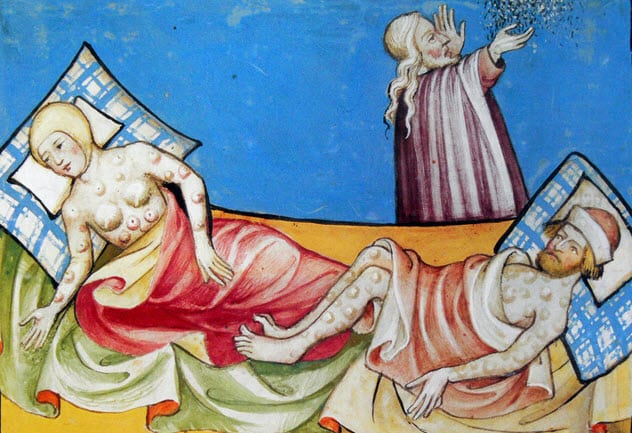
Although plague doctors were clearly and repeatedly associated with the Black Death, a grand total of zero doctors wore beak masks during that period. The “Black Death” is the name given to the biggest pandemic in recorded history, which claimed the lives of up to 200 million people from 1346 to 1353. Since then, scientists have been trying to identify the actual disease, and bubonic plague has long been considered the most likely culprit.
Plague doctors with their famous attire did not appear until 1619. The costume was designed by Dr. Charles de Lorme. Even then, it was not widely used until several decades later during the plague of 1656.[1]
The most likely explanation as to why these costumes became associated with the Black Death is the suspicion that bubonic plague was the cause. However, that theory has been called into question in more recent years. To discover more devastating details about the Black Death, check out 10 Factors That Made The Black Death So Deadly.
7 The Look
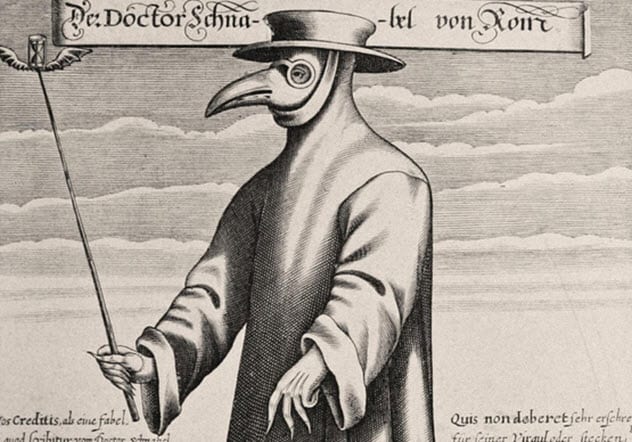
These costumes may not have existed at the same time as the Black Death, but they did exist eventually. So the obvious question is: Why?
Basically, this was humanity’s first attempt at the hazmat suit. The full-length coat was made of waxen leather, which was designed to be impermeable. It covered a shirt, breeches, and boots.
The doctors’ wide-brimmed hats were supposed to signal their profession (in case the rest of the costume was too subtle), and their canes were used to examine victims without touching them. Doctors also used these canes to signal to their assistants and fend off distraught family members.
But clearly, the most notable aspect of the uniform was its beaked mask, which does have a logical explanation. Remember that this was designed before doctors started washing their hands. So everyone was still trying to figure out how disease actually spread.[2]
It was theorized that “poisoned air” (aka “miasma”) was the cause, which is how the masks came to exist. Filled with herbs and spices, the mask was intended to overpower or drown out the miasma, thereby protecting the doctor.
Although we now know that you can’t simply stop an airborne illness by putting more stuff in the air, we should at least acknowledge that they weren’t completely off the mark. Air can be infected, and filtration can fix it. They just did it badly. And they didn’t stop there. Read more at 10 Crazy Cures for the Black Death.
6 The Smoldering Look

While patients obviously had it rough during the plague, their doctors didn’t have it much better. In addition to the risk of contracting the disease—as well as the social stigma—they had an unpleasant experience just wearing the uniform.
Anyone who has ever worn a mask for Halloween knows how gross and annoying it can be after a few hours. The design of these plague masks made it almost impossible for the doctors to speak to other people, which added to the already notable loneliness of the profession.[3]
However, for a small group of French doctors, spittle and prattle were probably not as concerning as the fires inside their masks. Building on the theory of miasma, some plague doctors in France set the scented material inside their masks on fire in the hopes that the smoke would help to clear the bad air.
Unsurprisingly, the fire technique never really caught on. But if you think that’s strange, you’ll want to read about 10 Utterly Creepy Historical Masks.
5 Treated Everyone
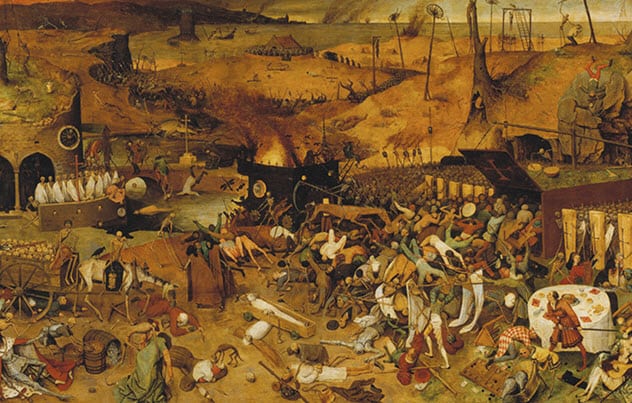
Given that the plague was so contagious that doctors needed specialist equipment, and that nobody really cared about poor people, it would be easy to assume that plague doctors only treated those who could afford it. But this was not the case. The poor may not have been able to afford treatment, but the plague was so contagious that the rich couldn’t afford to let their impoverished counterparts catch it.
For this reason, plague doctors were hired and paid by town councils to treat everyone in the hopes of completely eradicating the disease village by village. However, that didn’t stop the doctors from charging patients, too.[4]
Although the position paid well, it was generally taken by three types of people: new doctors, those who struggled in private practice, or volunteers who weren’t trained but were willing to give it a go.
In many cases, the towns provided additional benefits, such as a free home, payment of expenses, and a pension. As a result, plague doctors who technically treated patients for free actually embarked on lucrative careers.
Of course, modern doctors make a lot of money, too. Although they can be a godsend when you’re sick, you might be surprised to discover the Top 10 Disturbing Facts About Doctors.
4 Treatment Options
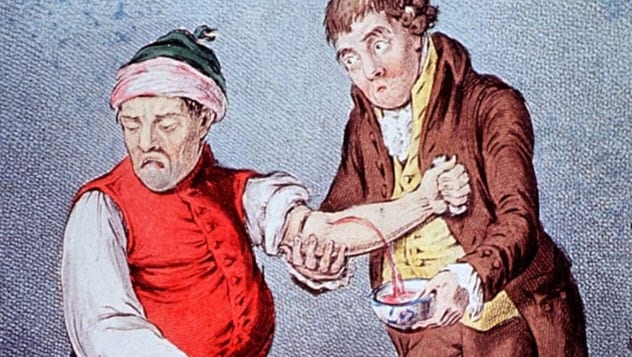
The plague doctor community was composed mostly of rejected doctors and nondoctors at a time when even the best medical practitioners knew diddly-squat. As a result, many of the treatments were . . . well, awful.
The infected poor morphed into lab rats as plague doctors became increasingly frustrated and creative with their treatments. However, none of those therapies helped in the end.
Bloodletting (deliberately bleeding a vein to decrease bad blood) was always a popular choice. Eating things like applesauce, mustard, or mint sauce was believed to help as well. So could filling the house with aromas.[5]
Alternatively, you could take some food items (such as onion, herbs, pigeon, or snake), chop them up, and rub them on the patient. Sometimes, arsenic and mercury were fed to infected individuals. Mercury was also used to coat the patient before boiling him in the oven, although this was usually a last resort (whether it was intended to be or not!)
Additionally, there was always the option of smothering patients in their own feces or dropping them in the sewer overnight if they couldn’t produce enough of their own waste. Click here to discover the 10 Secrets Of Ancient Feces.
3 Data Collection
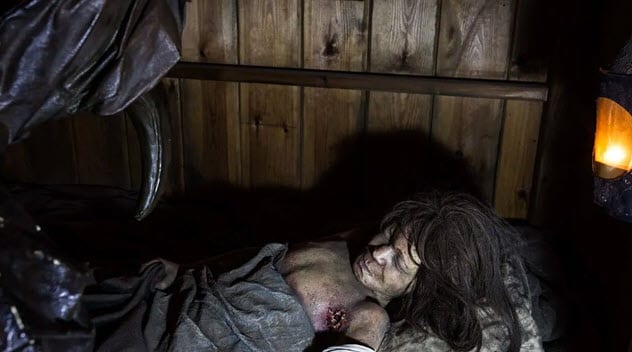
Everybody knows that data talks in the modern age. Whether you’re trying to sway the outcome of a political campaign or halt the spread of coronavirus, data is essential if you are going to win. Apparently, governments of the 17th century also realized the importance of data because its collection was a major part of being a plague doctor.[6]
You can imagine the kind of data they collected: suspected cases, confirmed cases, fatalities, cured patients, and more. This allowed plague doctors to start ruling out ineffective treatments, although they never really zeroed in on therapies that worked.
It was unusual for the time, but they also performed autopsies to learn more about the effects of this condition on the human body. As they were often with patients in their final moments, plague doctors were also required to record wills and testify in court if needed. Of course, plague doctors were amateurs when compared to data collectors in today’s world. For the frightening facts, read 10 Ways We Are Being Watched, Monitored And Spied On.
2 Pariahs

In societies across the world, doctors have almost always been held in high regard. Among the most well-educated members of society, they can alleviate your suffering and save the lives of your loved ones. All of this usually makes them popular. For plague doctors, though, it was a different story.
They spent so much time with the infected—which often caused the doctors to become sick as well—that other people were wary of socializing with them. When employed, these doctors were not allowed to mingle with the general public. Furthermore, they had to self-quarantine for an extended period when they were done treating patients.[7]
Even after that, they were generally treated as outcasts. Plague doctors were left alone to wander the streets of the villages they had saved or to move away in the hopes of starting a new life. For more fascinating facts about pariahs during the Middle Ages, check out the Top 10 Medieval Outcasts.
1 Missing Doctors

Plague doctors were usually well-educated, well-paid, well-liked, well-known, and well-connected. Even if they were terrible doctors, they probably came from reasonably rich families. They treated the political class and the elites, and they took part in legal proceedings. Clearly, plague doctors were important people, which is why it is so unusual that a number of them went missing.[8]
Although historical records from hundreds of years ago will always have gaps, these usually relate to the poor. Wealthier members of society had all kinds of records in banks, land registries, the courts, and so on.
Plague doctors were well-documented and kept under a watchful eye to ensure that they didn’t break their isolation clause. Despite this, they would occasionally just disappear.
Some were kidnapped for ransom, although these individuals were often swiftly returned. Others simply vanished off the face of the Earth. They may have fled, died of the plague, or been kidnapped to treat people in another city. It is probably a combination of all three.
But we’ll never be sure what happened to them. For some more spine-tingling mysteries of missing people, click here for 10 Eerie Last Words Of People Who Then Vanished Without A Trace. And if you have a theory as to where the missing plague doctors went, share it in the comments.








